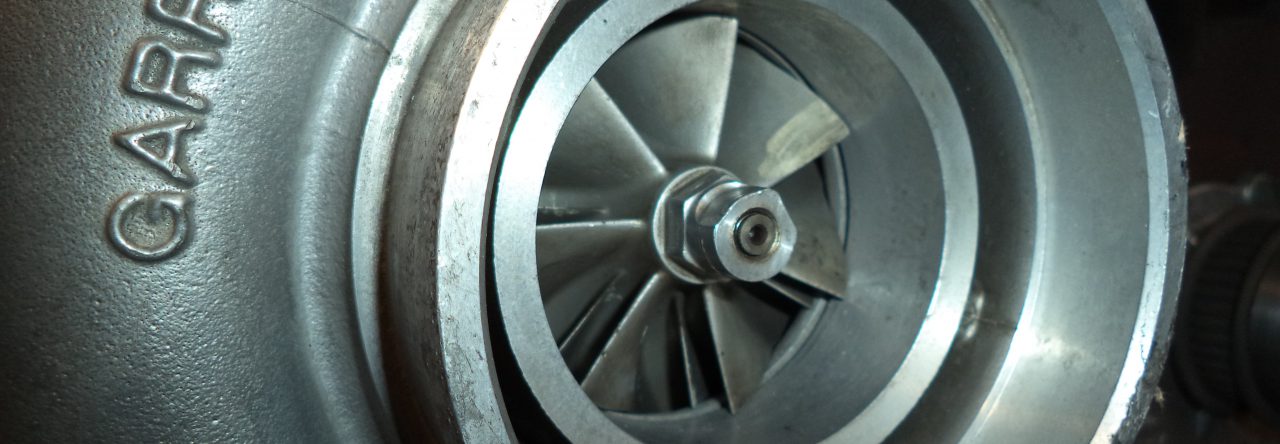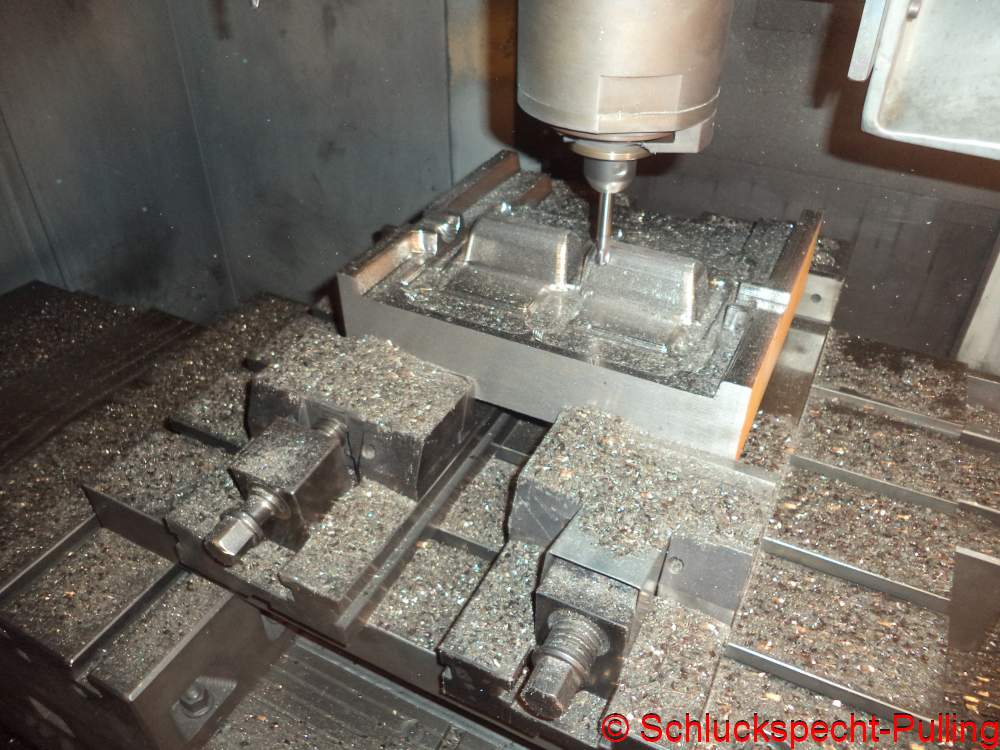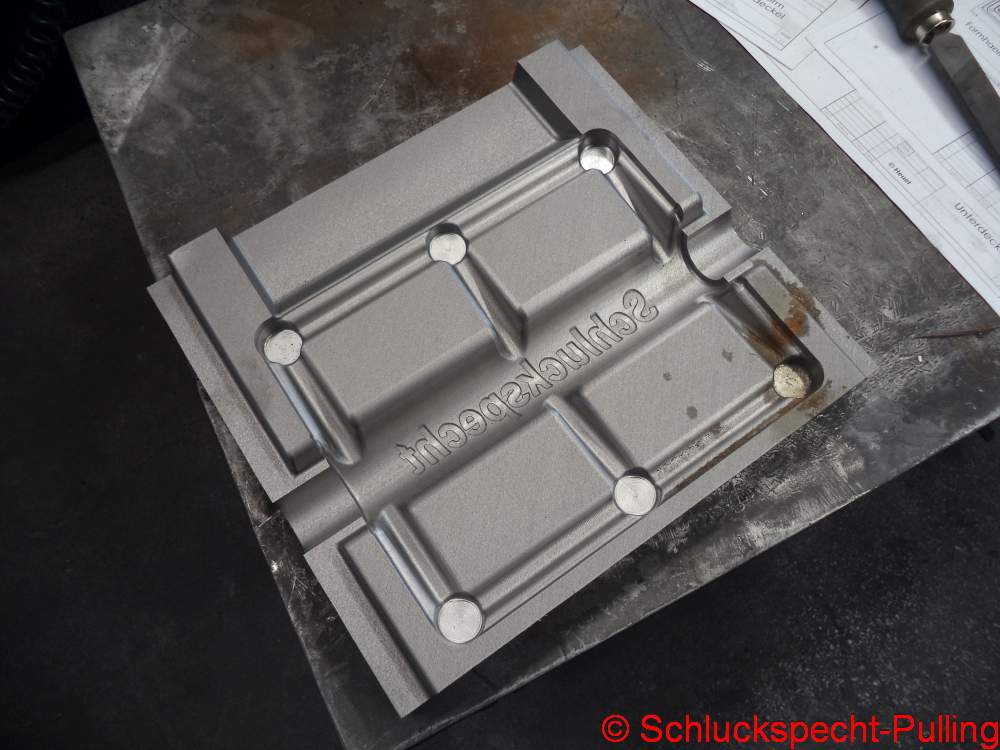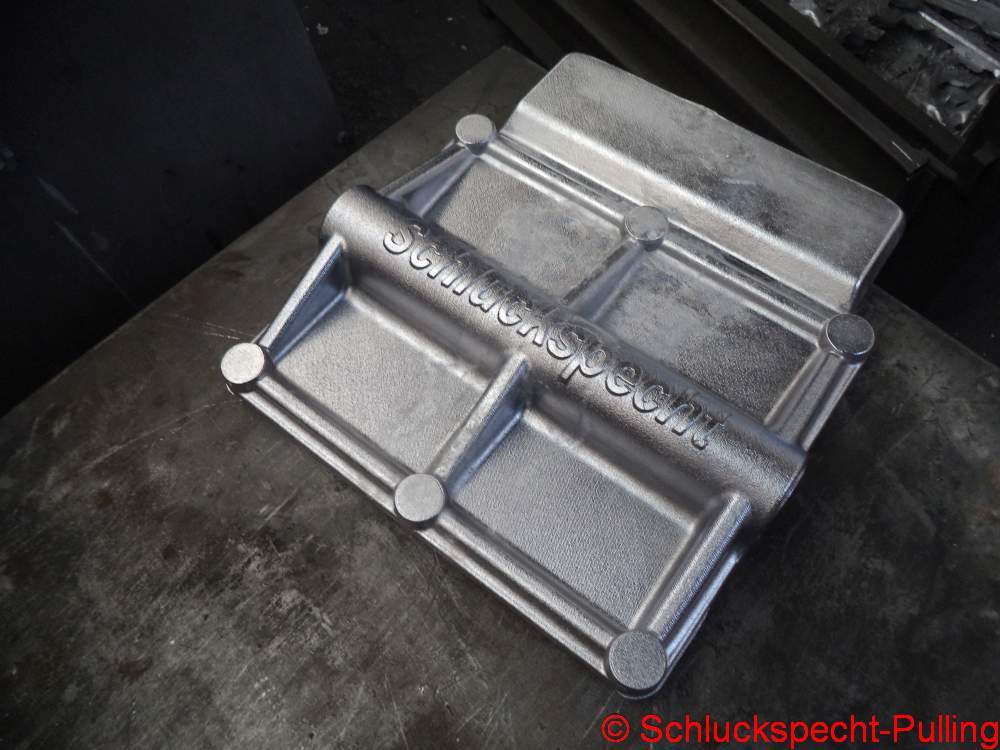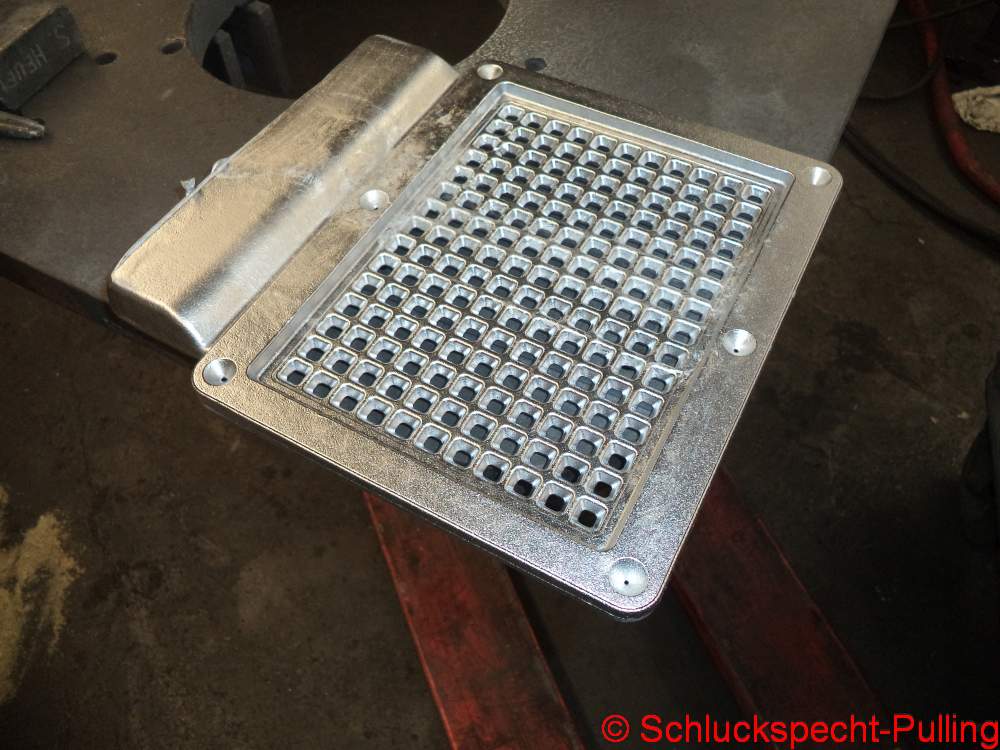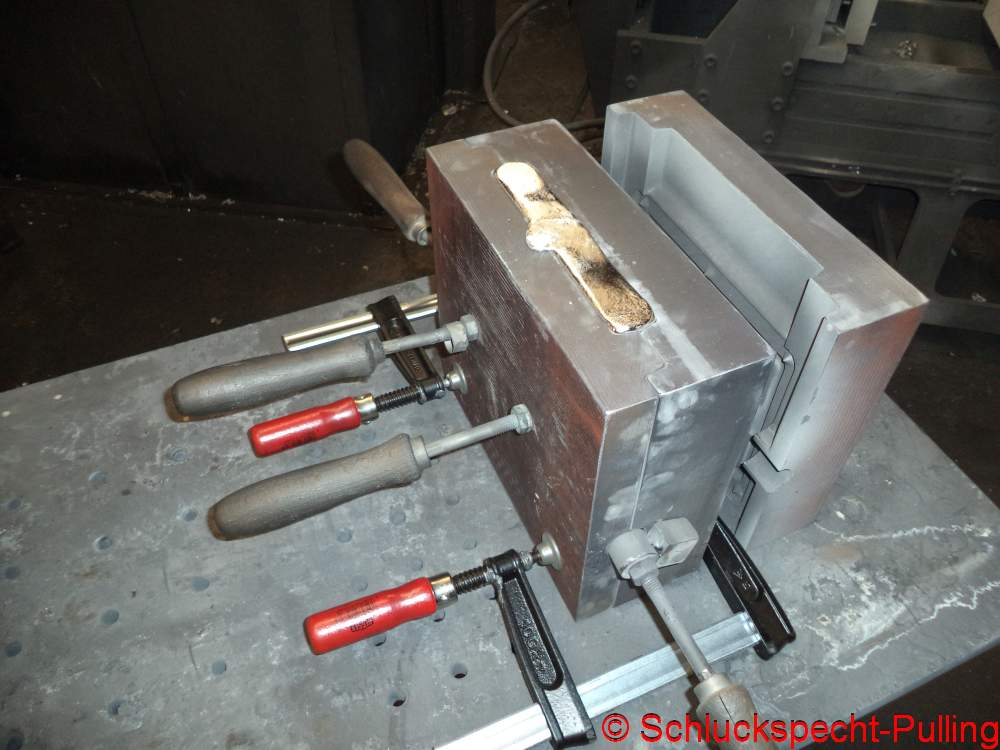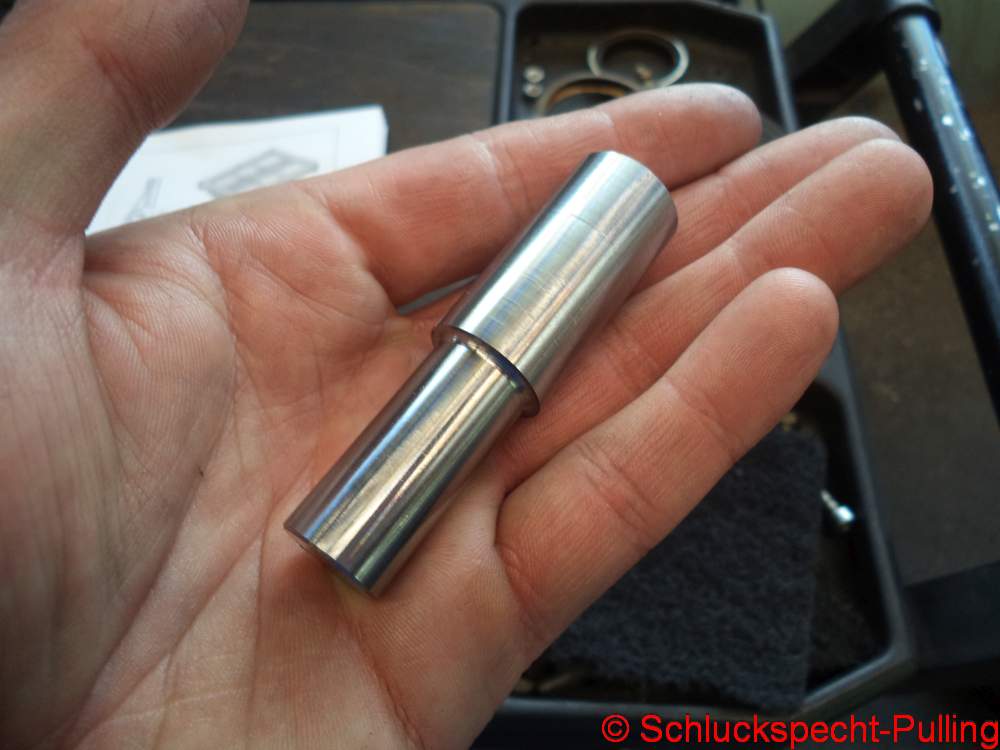Oilfilterspecial (english below)
In den letzten Beiträgen habe ich es bereits angekündigt: Es gibt ein Spezialbeitrag zu genau einem Thema. Da ist in der letzten Zeit ne Menge Arbeit reingeflossen. Eventuell auch etwas zu viel, aber Schluckspecht-typisch geht ein bisschen bekloppt halt nicht. 😉
Wieder einmal hat Frank Medinger vom Bear-Pulling-Team den ersten Denkanstoß gegeben. Danach hat sich alles verselbstständigt.
In the last posts I have already announced: There is a special contribution to exactly one topic. There has been a lot of work in recent times. Maybe a bit too much, but Schluckspecht-typical is not a bit crazy. 😉
Once again, Frank Medinger of the Bear-pulling-team gave the first food for thought. After that, everything has become self dynamic.

Also worum geht es? Ölfilter *hihihi*
Der Aufmerksame Pullingfan hat sicher schon die merkwürdigen, quadratischen Aluminiumdinger mit den Schlauchanschlüssen gesehen die in oder an vielen Treckern hängen. Das sind so genannte Plattenölfilter. Im Grunde tun die genau das was man von einem Ölfilter erwartet: Öl filtern.
Der Grund warum man nicht die seit Jahrzehnten etablierten Patronenfilter nimmt ist einfach der, dass man in diese nicht hineinsehen kann ohne sie aufzuschneiden.
Im Auto ist das auch einfach nicht nötig. Beim Pulling kann sich ein Motor bei einem Zug schon mal langsam desintegieren und in Späne verwandeln. Das merkt man aber nicht immer sofort. Einzige Möglichkeit einer Schnelldiagnose ist der Blick in den Filter. Sind da Späne zu finden sollte man das Finale lieber sausen lassen. 😉 😉
Genau die Möglichkeit bieten die Plattenölfilter. 4 Schrauben los, Sieb ansehen und wieder zu machen.
Soweit so gut. Wo viel Licht ist, ist auch viel Schatten:
-
- Es werden spezielle Siebe benötigt die aus den USA kommen und mit Gold aufgewogen werden.
- Eine Demontage ist immer noch nötig um reinsehen zu können.
- Die Teile sind fast immer aus dem Vollen gefräst. Oder wie der Gießer sagt: Igittigittigitt 😉
- Setzen sich die Dinger langsam aber unbemerkt zu reißt oft das Sieb und der ganze Dreck landet doch im Motor.
So what is it about? Oil filter * hehehe *
The attentive Pullingfan has certainly seen the strange, square aluminum things with hose connections hanging in or on many tractors. These are so-called sreen oil filters.
Basically, they do exactly what you would expect from an oil filter: Filtering oil.
The reason why not use the cartridge filter established for decades is simply that you can not look into it without cutting it up.
In the car that is simply not necessary. When pulling an engine can sometimes disintegrate at a pull and turn into metal shavings. But you do not always notice that immediately.
The only possibility of a quick diagnosis is to look into the filter. If there are metal chips to find you should rather not go for the pull off. 😉 😉
Exactly the possibility offer the screen oil filter. 4 screws off, watch the screen and put together .
So far so good. There is plenty of shade where there is a lot of light:
- Special sieves are needed which come from the USA and are outweighed with gold.
- Dismantling is still needed to be able to look inside.
- The parts are almost always milled from solid. Or as the foundry says: Ugh!!! 😉
- The filter often cut the screen when becoming sealed and all the dirt ends up in the engine.
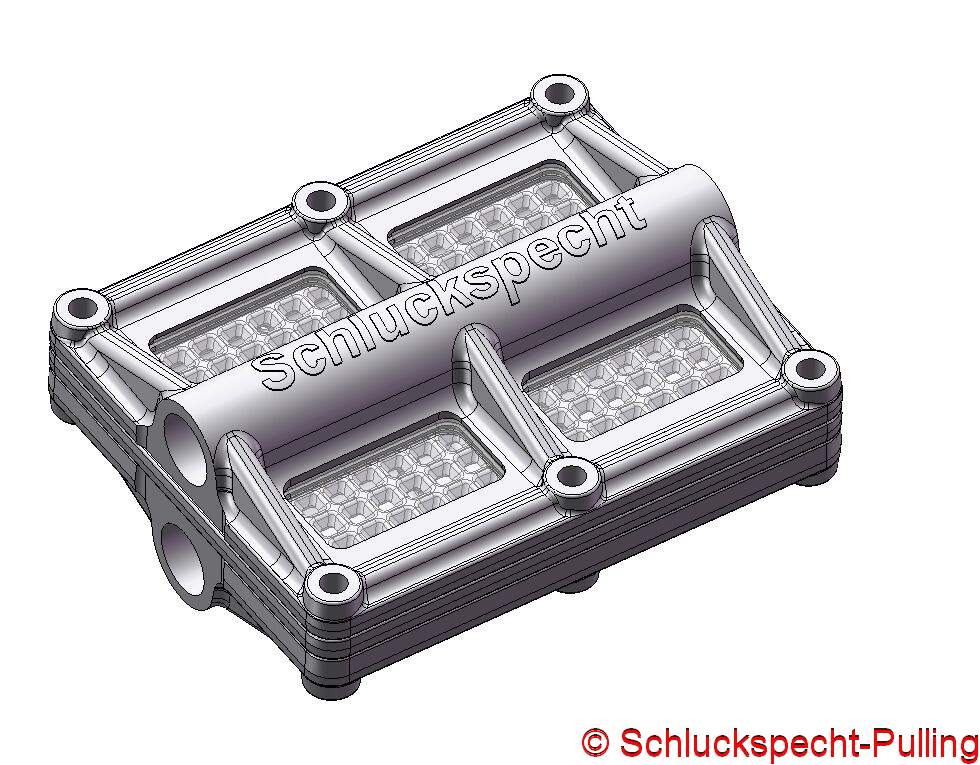
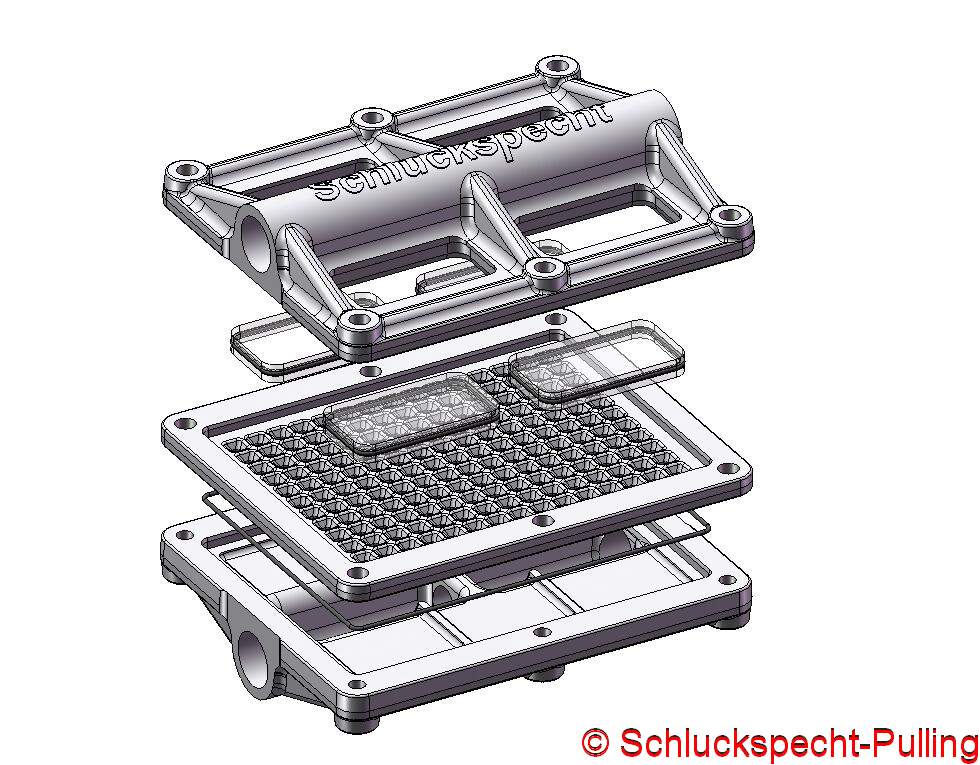
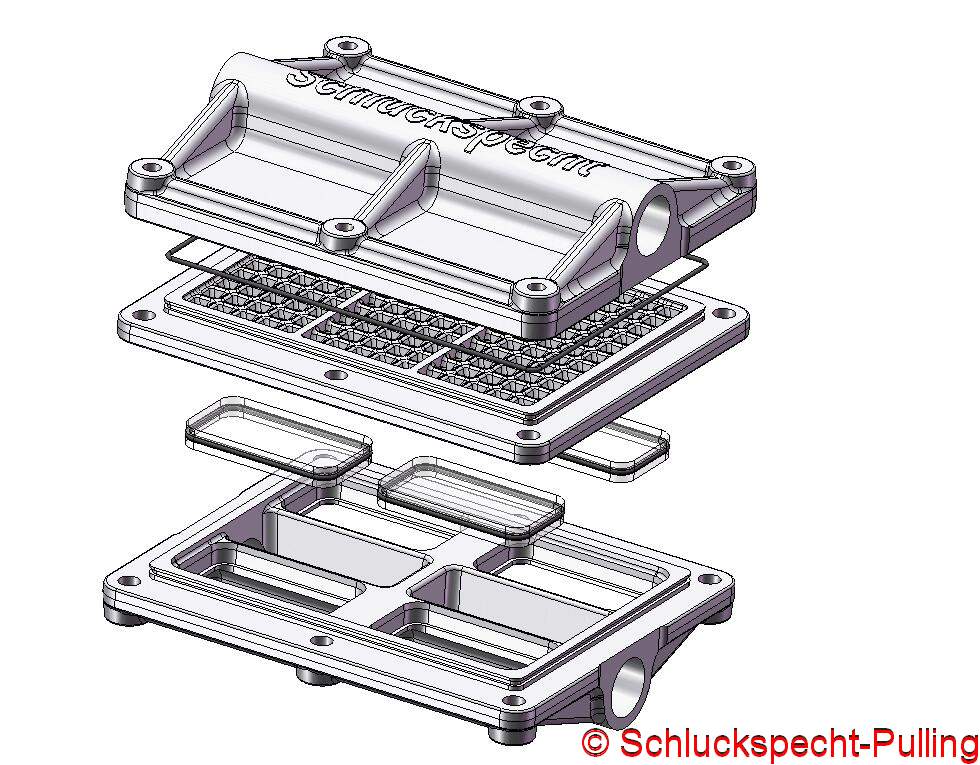
Und schon läuft der graue Muskel im Kopf und das CAD auch.
Die beiden Hauptideen sind so simpel, wie einfach, wie bekannt. Zum einen bekommt der Filter Sichtfenster aus 10mm Polycarbonat, zum anderen wird das Sieb einfach mit der Schere zugeschnitten und geklemmt, die Abdichtung erfolgt mit O-Ringen. Das es sich im Gussteile handelt muss ich wohl nicht extra erwähnen, oder? 😉 😉
And already the gray muscle runs in the head and the CAD too.
The two main ideas are as simple as already known. On the one hand, the filter gets a viewing window made of 10mm polycarbonate, on the other hand, the screen is simply cut with the scissors and clamped, the sealing is done with O-rings.
That it is made from castings, I do not have to mention extra, right? 😉 😉
Raw material…..
…Roughing….
…semi finishing…
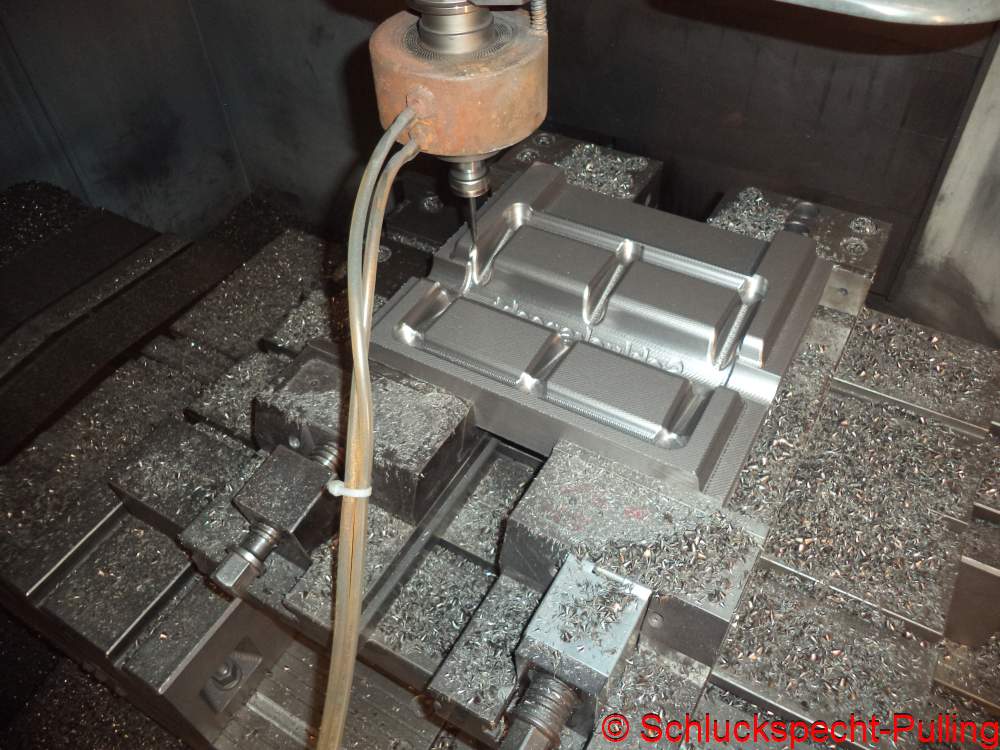
…Schlichten…ja, erwischt, ist ne andere Formhälfte 😉
…Finishing….ok, you got me, it´s a other mold half 😉
…Voilá…. (French, I know 😉 )
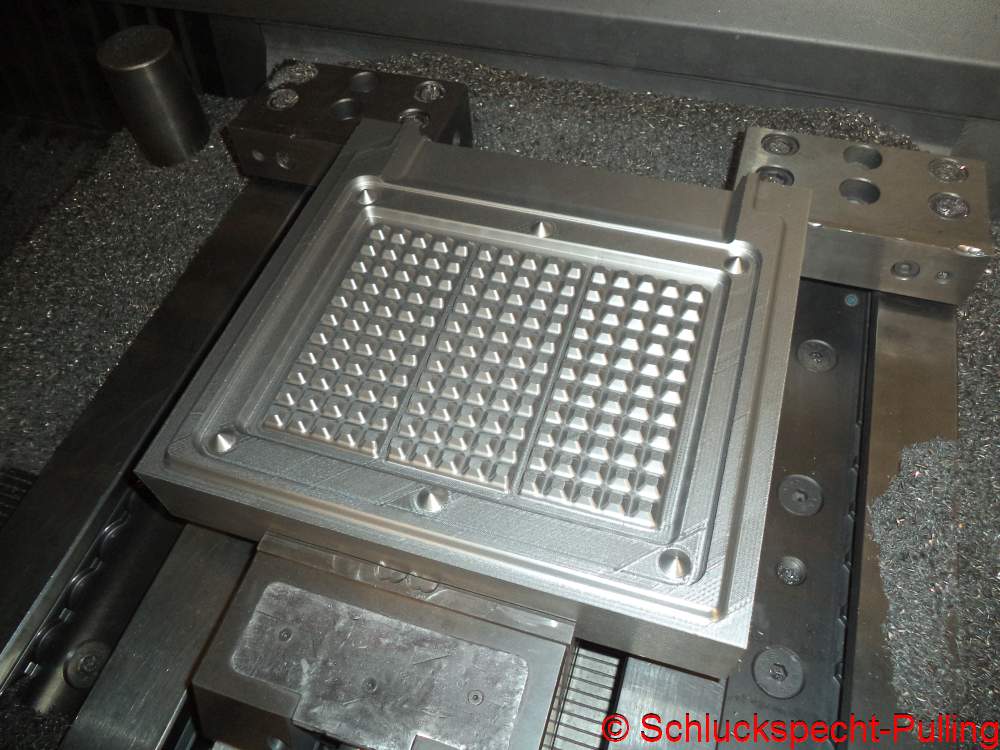
Sieht fast aus wie ein Waffeleisen….
Almost looking like a waffle iron…..
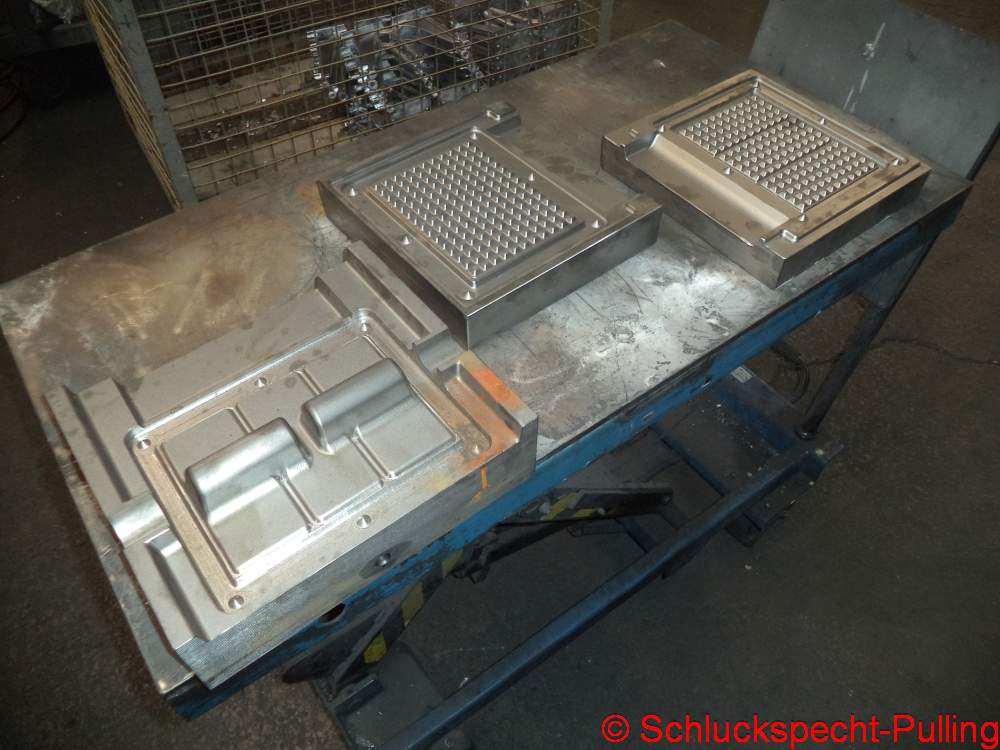
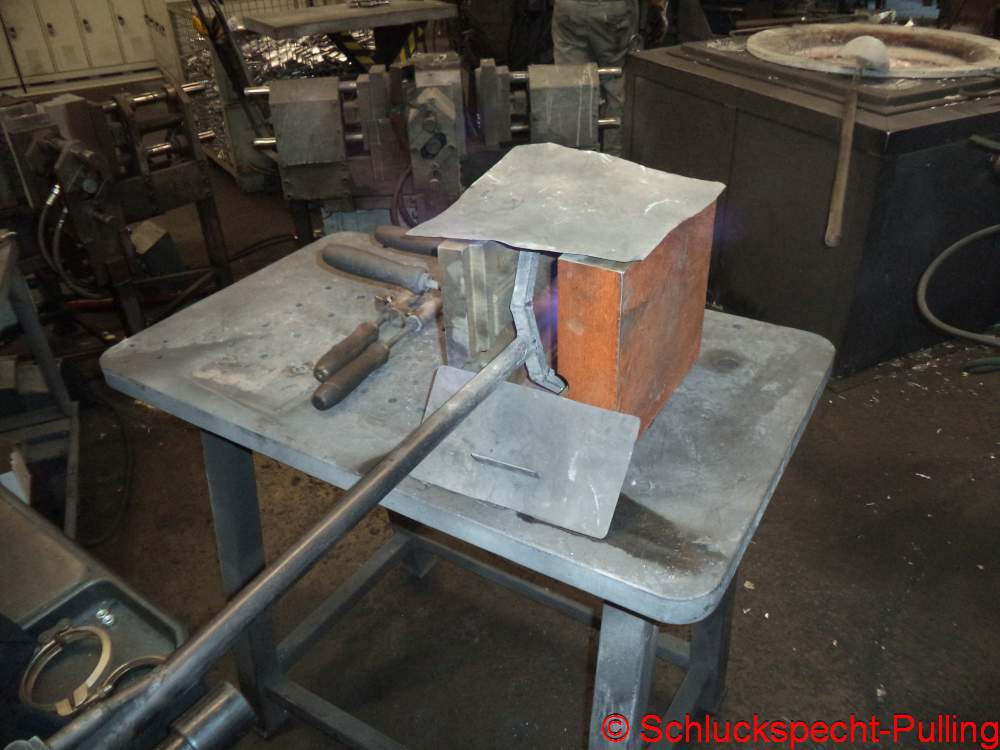
Präparieren, Anheizen, Einschlichten und…..
Prepare, heat up, mold coating and….
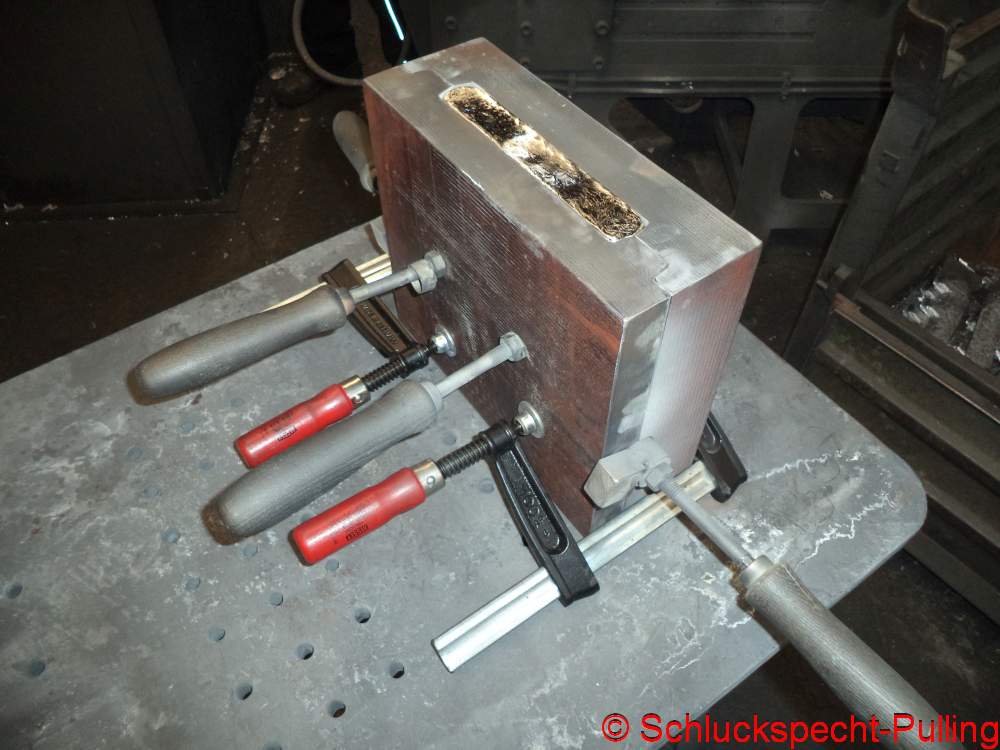
…Gießen. Ist die Form erstmal fertig beginnt der Spaß. Warum seht Ihr weiter unten…..
….casting. If the mold´s are made, the fun begins. You´ll see why down below….
The very first parts of it´s type.

Naaa? Merkt Ihr wie der Spaß kommt?
Hey? Do you realize how fun is?
Pow, nex mold heated up…
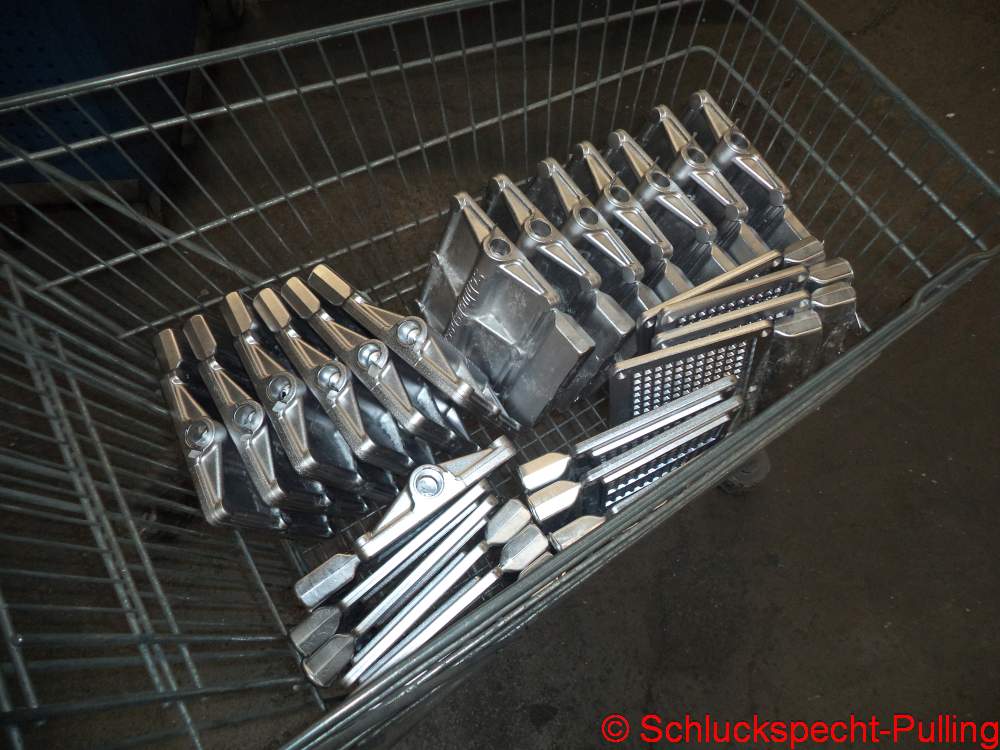
….und schon ist der Spaß kaum auszuhalten.
Billet am Arsch 😉 😉
… and already the fun is unbearable.
Billet on the ass 😉 😉

Ohne Fräsen geht es dann doch nicht ganz.
Without milling it´s not quite done.
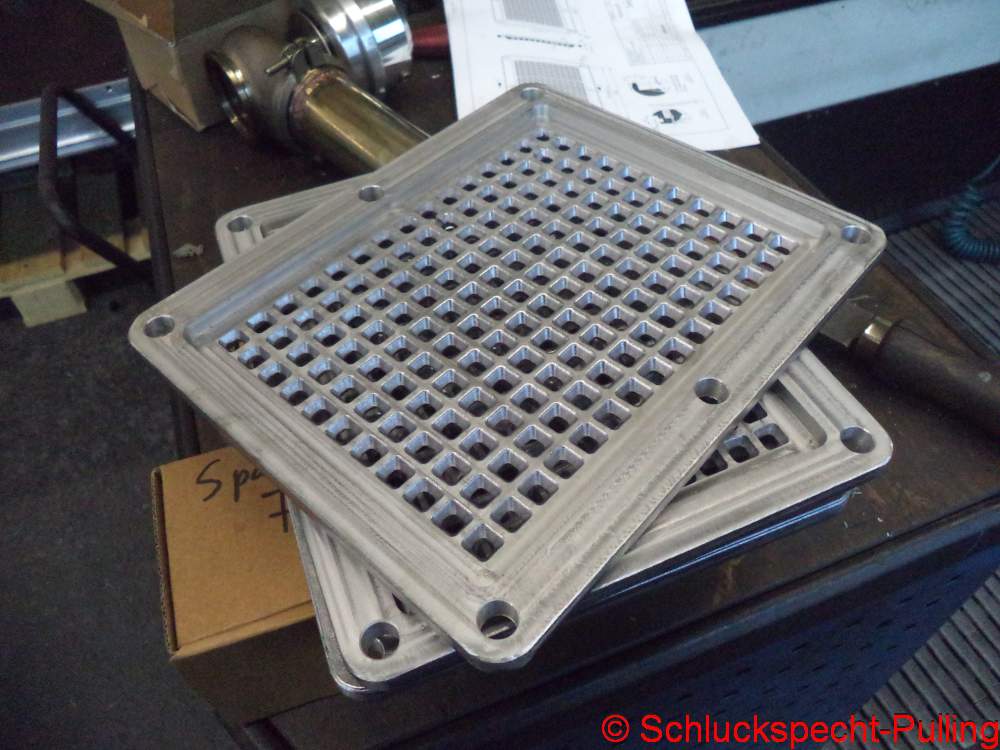
Das Teil hab ich dann mal -in Anlehnung an eine bekannte DMAX-Serie- Siebdeck genannt 😉
Die zahlreichen, abgerundeten Auflagen für das Sieb verhindern das es reißt. So zumindest der Plan. Achja, stapelbar sind die Siebdecks natürlich auch. Damit kann man den Späneschrott sogar durch unterschiedliche Feinheiten klassieren *rofl*
The part I then times -in reference to a well-known Discoverychannel series – screendeck called 😉
The numerous, rounded supports for the sieve prevent it from cutting. So at least the plan.
Oh yes, the screen decks are of course stackable as well. So you can classify the chip scrap even by different sizes *rofl*

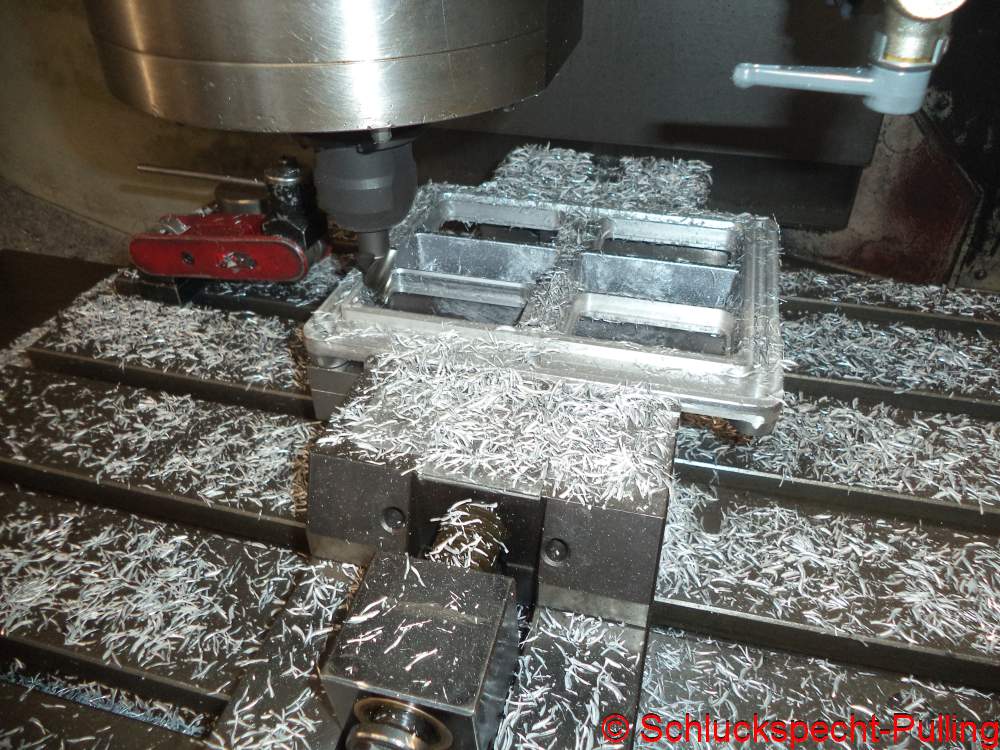
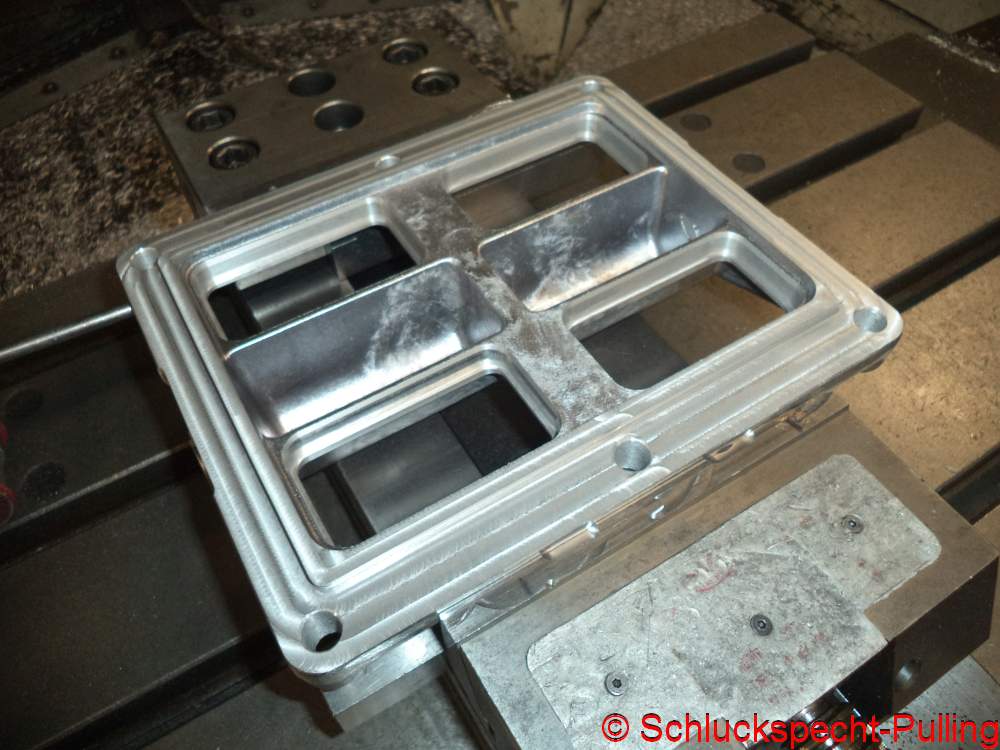

Auch die anderen Teile werden einfühlsam aber doch bestimmt in ihre endgültige Form gebracht.
The other parts are sensitively but certainly brought to their final form.
Windows made from polycarbonate…
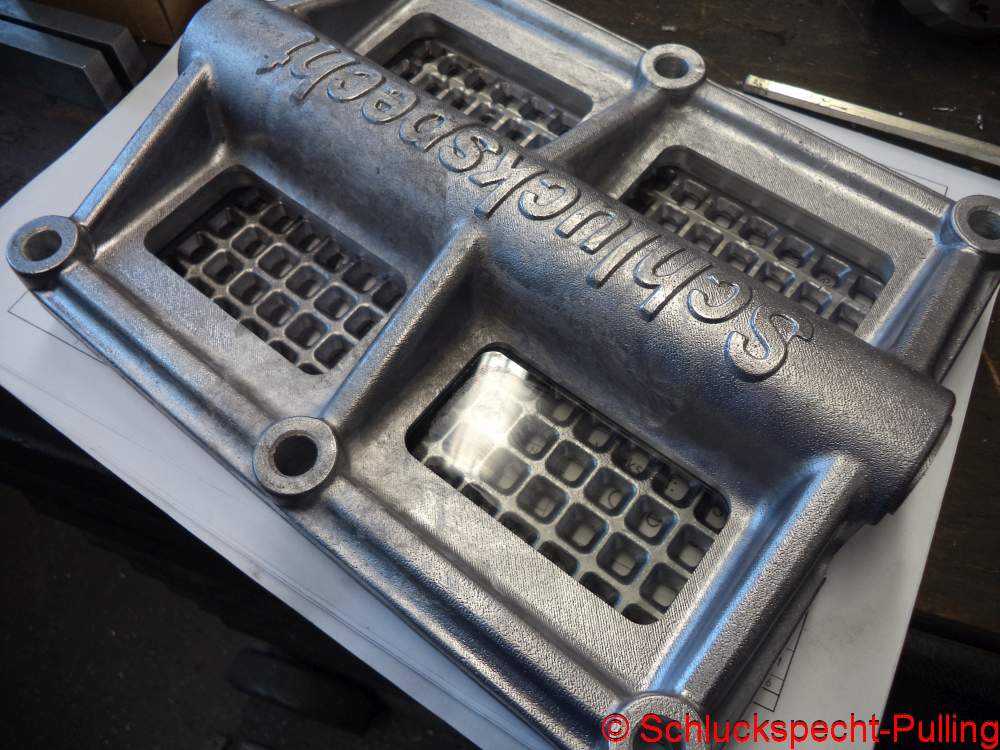
Damit ist es wieder mal Zeit für mein Lieblingsthema:
Angloamerikanische Schwachsinnsgewinde
Irgendwie muss ja das Öl in den Filter rein und auch wieder raus. Ein Quasistandart im Motorsport ist das Dash-System. Soweit so gut. Die Wahl fiel schließlich auf einen Dash 12 (ORB 12) Anschluss. Nur was ist das für ein Gewinde? Na klar, 1 1/16″ -12-UN. Nicht zu verwechseln mit den ziemlich verbreiteten UNF oder UNEF Gewinden. *würgkotzbrech*
Natürlich gibt es dafür keine Gewindebohrer zu kaufen. Nirgends.
Also Plan B. In der elektronischen Bucht hab ich dann tatsächlich Gewindefräsplatten für 12 Gänge/Zoll gefunden. Sogar ziemlich günstig. Ein Trägerwerkzeug…….natürlich…..nicht.
Now it’s time for my favorite topic again:
Angloamerican stupidthread´s
Somehow the oil has to go in and out of the filter. A near-standard in motorsport is the Dash system. So far so good. The choice finally fell on a Dash 12 (ORB 12) connection. Only what is this thread? Of course, 1 1/16 „-12-UN, not to be confused with the fairly common UNF or UNEF threads. *pukevomitbarf*
Of course, there are no taps to buy. Nowhere.
So Plan B. In the electronic bay, I’ve actually found thread milling insert for 12 threads/inch. Even pretty cheap. A carrier tool … … of course ….. not.
Piece of steel….
…is going to the mill….
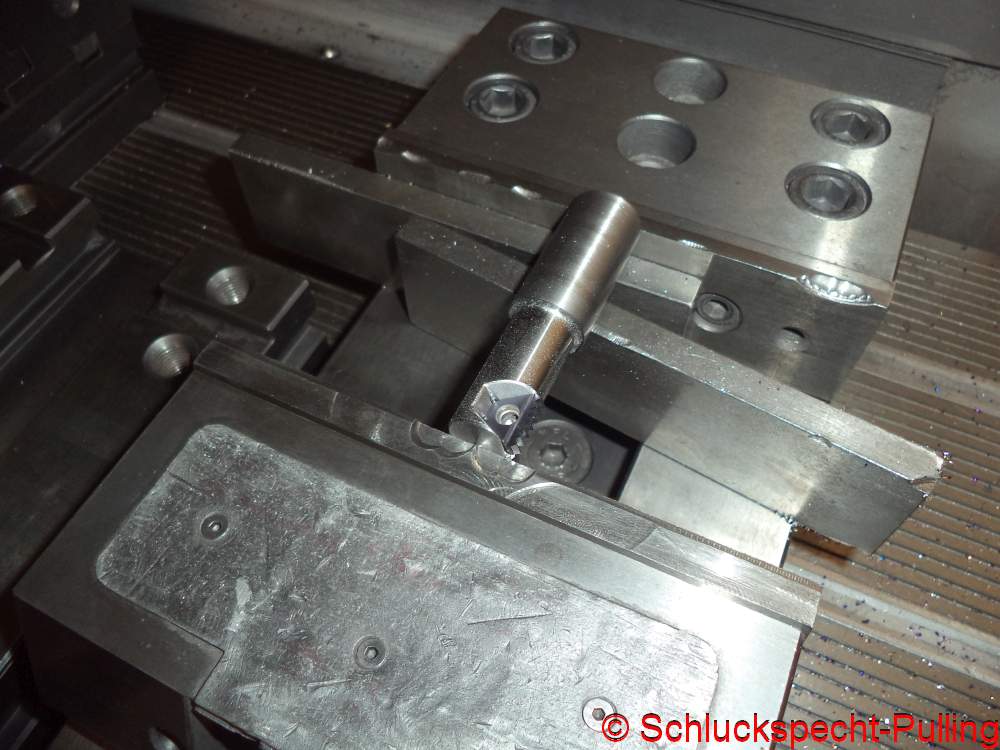
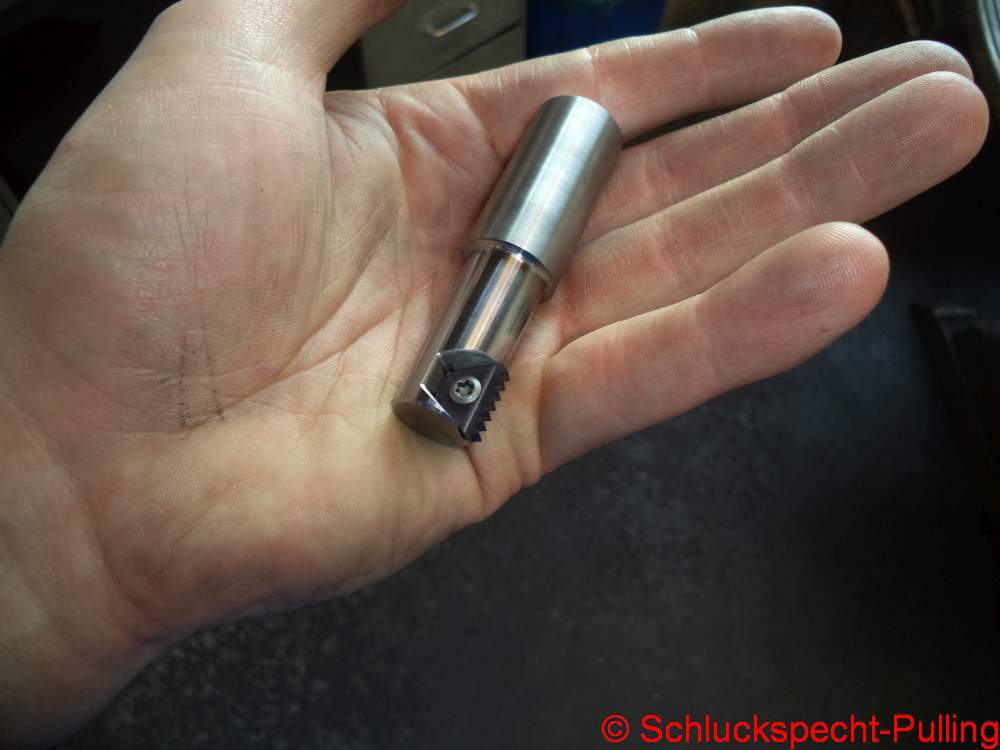
…zum Gewindefräser. Man hat ja auch sonst nichts zu tuen.
….to become a thread mill. One has nothing else to do.

Nach dem Bau einer Spannvorrichtung…..
After building a jig….
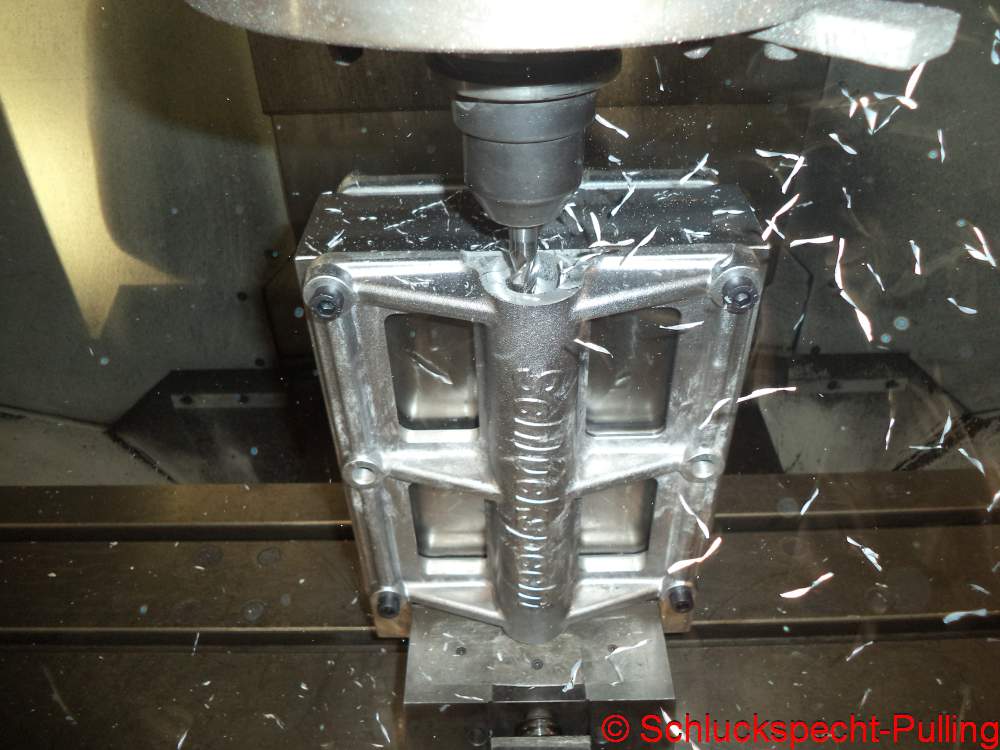
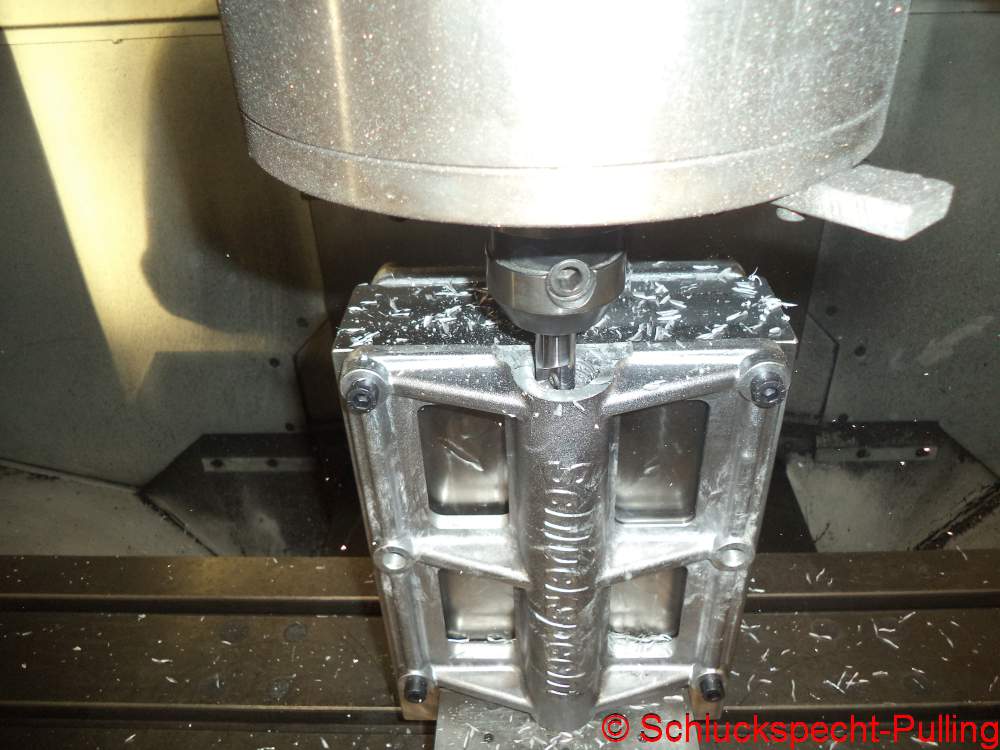
…konnte auch die letzte Aufspannung in Angriff genommen werden.
…the last machining could be done.
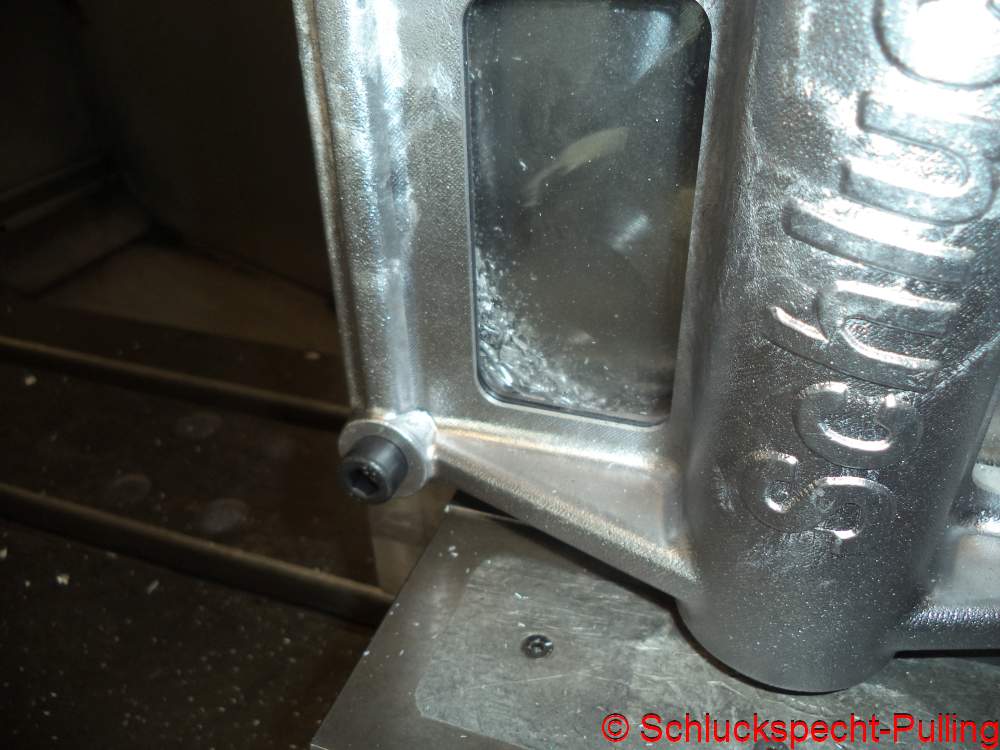
Wenn es später mal so aussieht: Motor nicht mehr starten….wirklich nicht 😉
If it later looks like this: Don´t start the engine …. really not 😉
Fitts!
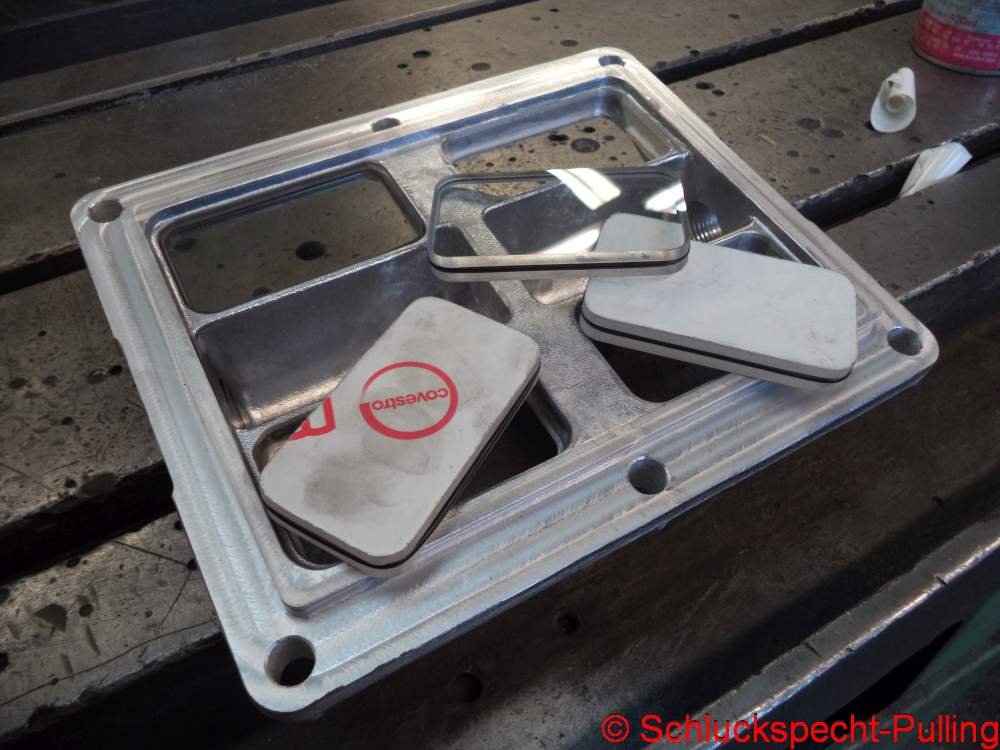
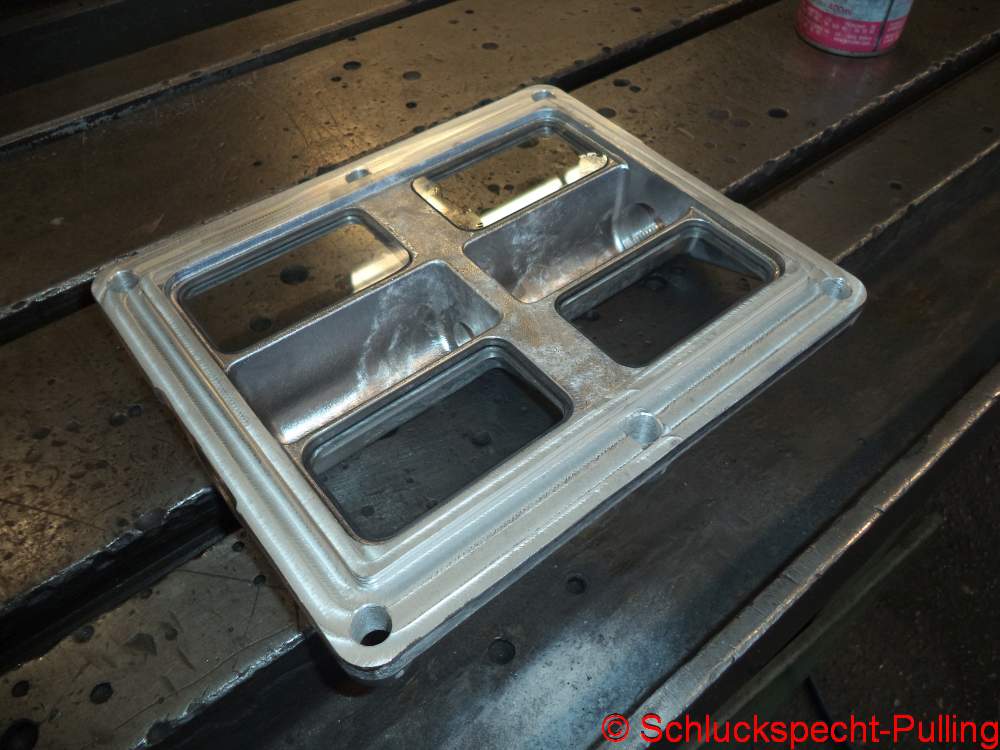
Nach eingehender Reinigung geht es zur Montage.
After sufficient cleaning the assembly starts.
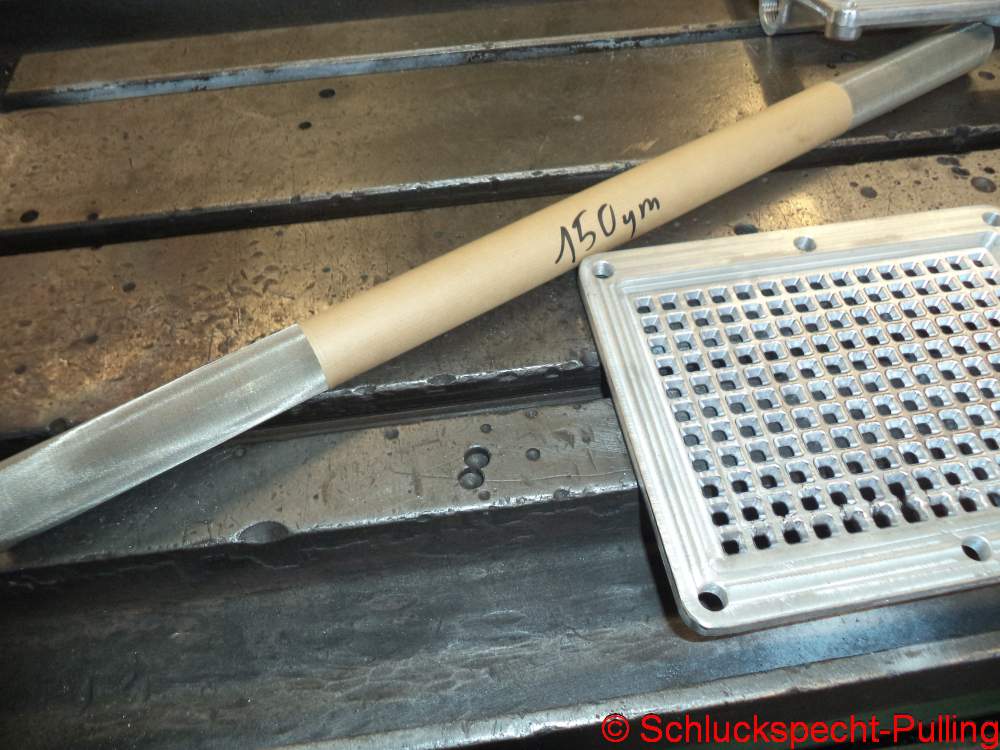
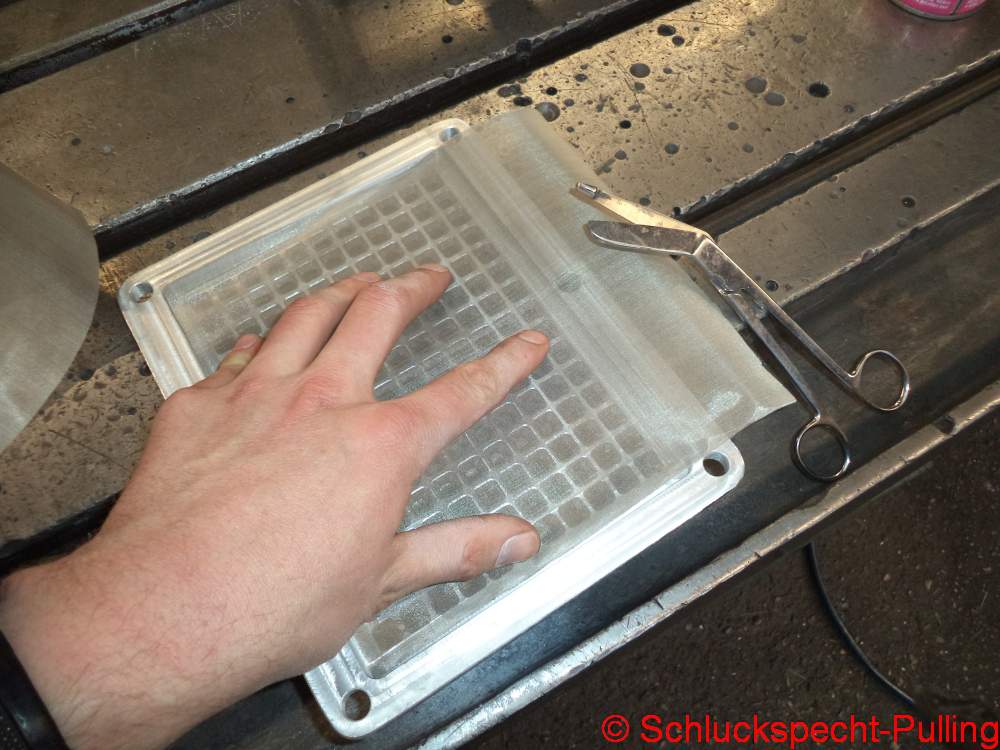

Das Siebgewebe wird einfach grob zugeschnitten. 150 Mikron nur deshalb weil der Filter in den Rücklauf von der Trockensumpfschmierung soll. Da reicht das als Motortodindikator 😉
The mesh is simply roughly cut. 150 micron has been choosen only because the filter is designated in the return from the dry sump lubrication. That should work as an indicator of engine death 😉
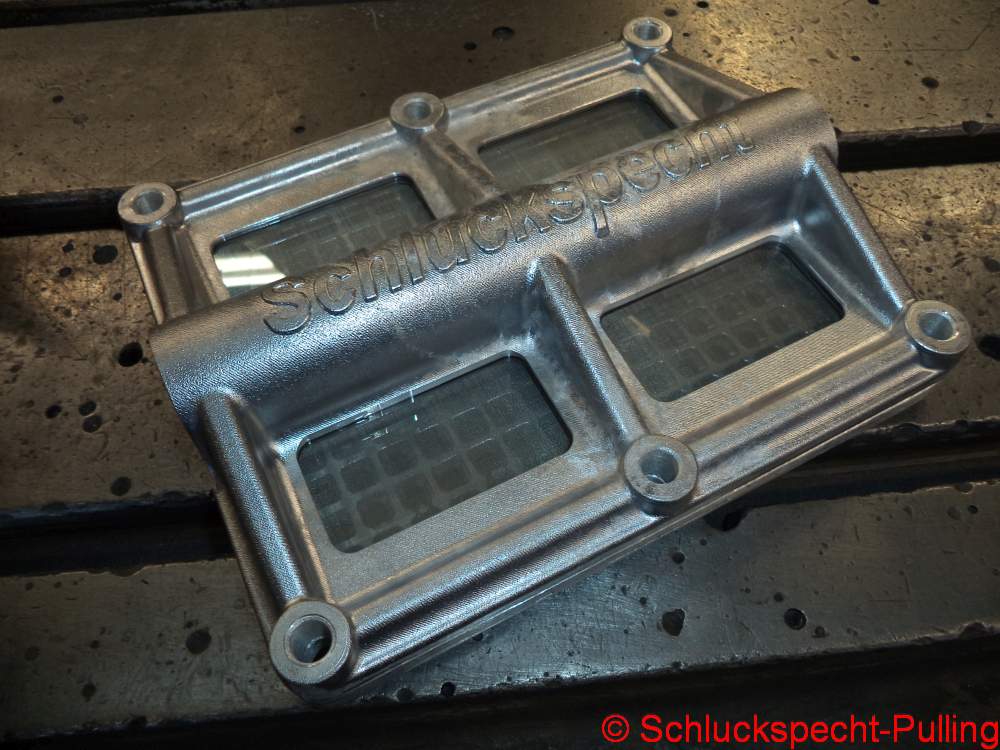
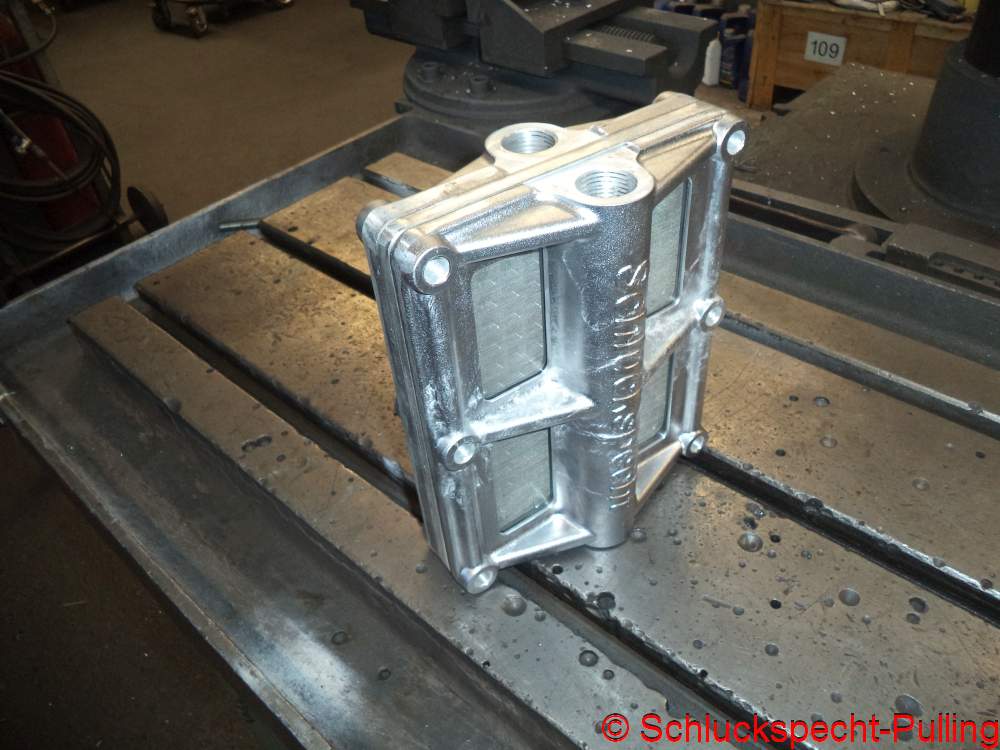

Damit endet das Spezial zum Thema Ölfilter auch schon ganz abrupt und unerwartet.
Drucktests und kleinere Verbesserungen stehen noch aus. Wird aber wohl schief gehen.
Natürlich haben wir nicht unsere ganze Zeit für einen dusseligen Filter verplempert. Am großen Schluckspecht ist es in der Zwischenzeit auch weiter gegangen. Die fetten Einspritzventile sind auch wieder in den Fokus gerückt und haben ein ordentliches Update bekommen bevor jemals auch nur ein Tropfen Methanol durch gegangen wäre….Pullingwahnsinn halt 😉
Das alles hat aber in diesem Spezial keinen Platz und wird in späteren Beiträgen thematisiert. Ordnung muss sein.
This ends the special on oil filters already quite abruptly and unexpectedly.
Pressure tests and minor improvements are still pending. But probably that will be ok.
Of course we did not waste our whole time on a dizzy filter. In the meantime, it has also continued along the large Schluckspecht. The fat injectors have also moved back into focus and have received a decent update before ever even a drop of methanol would have gone through …. Pulling Madness 😉
All this has no place in this special and will be discussed in later contributions. Order must be.
Stay tuned!
 4480total visits,2visits today
4480total visits,2visits today
